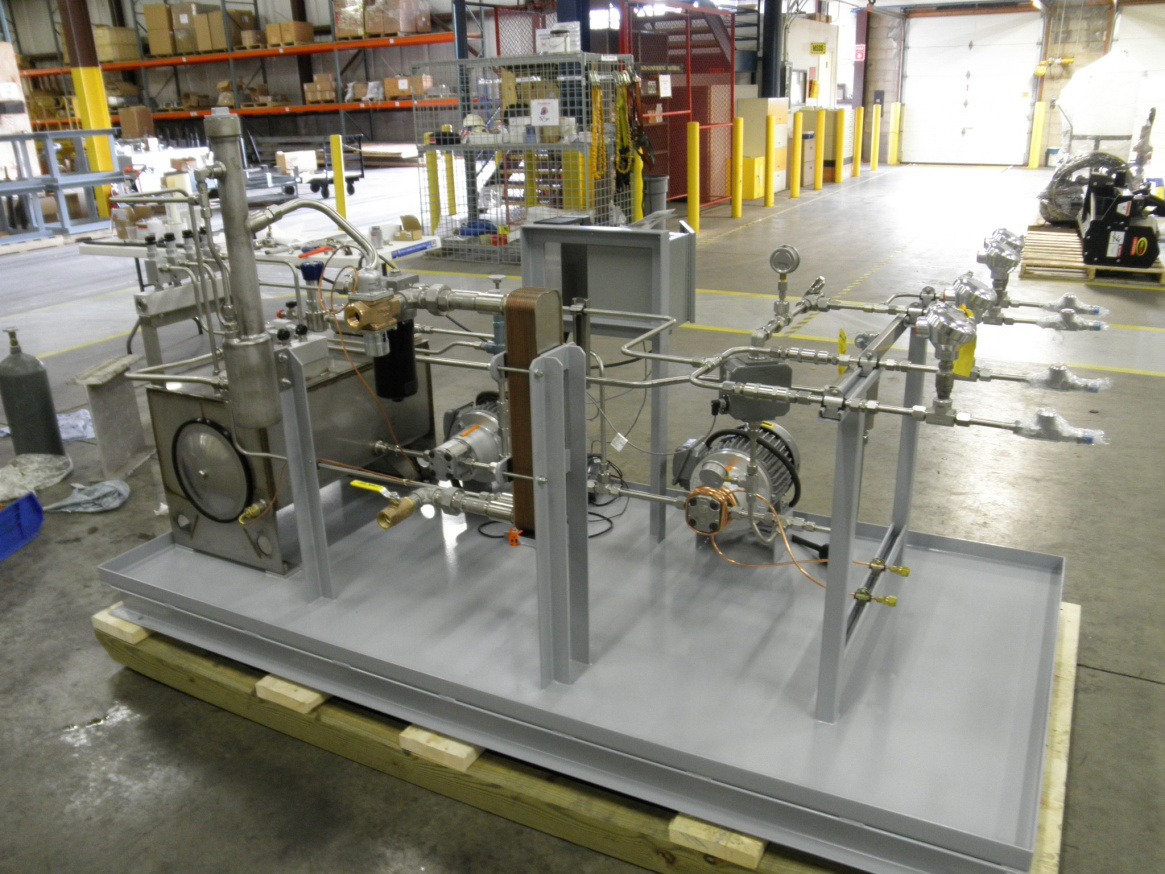57th Annual Report on Research 2012 Under Sponsorship of the ACS Petroleum Research Fund
Reports: DNI950554-DNI9: Gas Expanded Lubricants - Improving Energy Efficiency Using 'Smart' Fluids
Andres F. Clarens, PhD, University of Virginia
Over the past two years,
laboratory efforts have been focused on characterizing the chemical and
physical properties of GELs under a variety of bearing-relevant conditions. In
Year 2, the phase behavior of the mixtures was characterized with a goal of
compiling results and inputting them to an industry standard model of bearing
performance. The results from this analysis are the basis for a paper under
review in Tribology Transactions. A
brief overview of some of the data that was collected is presented here. Diffusivity CO2 diffusivity
into a variety of representative lubricants was measured and the resulting
diffusion coefficients are plotted as a function of lubricant viscosity in
Figure 1. These results indicate greater diffusivity of CO2 into the
lubricants with lower viscosities. Polyalkylene glycols, polyalpha olefins, and
ester-based synthetic lubricants of the same viscosity have also been found to
have the same degree of CO2 diffusivity. These results are
consistent with our hypothesis and they will provide valuable practical
understanding in the design of gas exchangers and other unit operations needed
to support GEL technology deployment. Figure 1. Carbon dioxide diffusion
coefficients as a function of lubricant viscosity. Oxidative
Stability Oxidative stability of GELs
has been measured over the past year and the results suggest that the
lubricants are highly resistant to oxidation over time undergoing less
oxidation than conventional petroleum based lubricants, even in the presence of
high-pressure CO2. Our results showed little change in the viscosity
of GELs and synthetic lubricants alone over the six-week period. Modest
increases in viscosity were observed for the petroleum-based lubricants over
the same time period and under similar temperature conditions. Visually, the
GELs showed no change during this period while the petroleum-based lubricants
quickly became darker in appearance as higher molecular weight sludge formed. CO2
has been shown to accelerate oxidation of other compounds. Viscosity Extensive
efforts to characterize the viscosity of a library of GELs were initiated in
Year 1 and completed in Year 2. The viscosity of various mixtures of lubricant
and CO2 was measured for a range of pressure and temperature
conditions. Different base viscosities were selected to illustrate the effect
that CO2 can have on these mixtures. Mass fraction values were
obtained by volumetric readings on the carbon dioxide pump and mass balance
calculations. The experimental data shows a good fit with an Arrhenius type
mixing relationship. This mass fraction-viscosity relationship has been found
to accurately predict the viscosity of GELs of all lubricant types and base
viscosities for a wide range of applicable carbon dioxide concentrations. The
viscosity-composition data being generated here will form the basis for the
controllers that will be developed to regulate the composition of the GELs
being delivered to the bearing. Task 2. Develop an experimental testbed to measure
bearing performance using GELs During
Year 2, we completed the design and began construction and assembly of the mechanical
test rig that will be used to measure the performance of GELs in tilting pad
bearings. The only remaining design detail that we are finalizing is related to
the high pressure seals that will be used to maintain the high pressure in the
bearings. These have to be custom built and we are currently conducting
computational fluid dynamic (CFD) testing of the seal design. These CFD
simulations are providing us with leakage rates and we expect that the design
will constitute novel contributions for the literature since no off-the-shelf
technology currently exists to maintain high pressures under the speeds we
expect to test. The test rig will use
a 10 hp motor capable of reaching 10,000 rpm to drive a 1.5" rotor of
approximately 42" in length. This rotor will be supported by two tilting-pad
journal bearings supplied by Lufkin-RMT, Inc., who is currently working to manufacture
the individual components. A major focus this past year has been on developing
the gas and lubricant delivery system that will generate the GELs and supply
them to the bearings. Lubricant will be fed into the system at a rate of 2 gpm
from an oil reservoir while CO2 will be provided by one or more
liquid CO2 canisters. Two pumps will supply these mixtures to each
housing. After exiting the bearing housing, the lubricant will flow back into
the reservoir where CO2 can be removed in an open-loop design. The
design of this delivery system was completed during this second year of the
project and the system has been received, pictured below in Figure 2. The
installation of this system is currently taking place as we prepare to receive
the rest of the test rig. The installation of the test bed and preliminary
experiments will be completed in the final year of the project. Figure 2. Delivery
system, built in Year 2, for pumping GELs to the test rig bearings.












